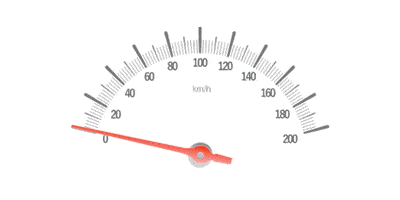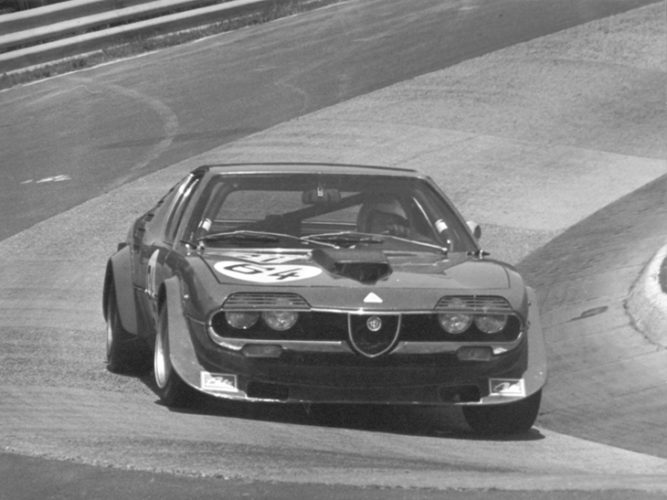Portello Factory stories: the Alfa Romeo Montreal Group 4
By Luigi Giuliani
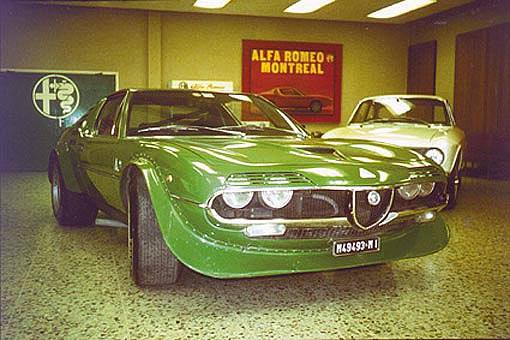
During the introduction of the Montreal at Balocco, in April 1971, there leaked out some unconfirmed reports regarding the use of its engine in competition. According to the Alfa Romeo programs, it was anticipated that it would be used in Formula 2 as the only true alternative to the Ford Cosworth. The regulations of the category for 1972 allowed 2 litre engines derived from Group 3 cars (Grand Touring class), a category in which was foreseen the homologation of the Montreal.
In September 1971 Autodelta introduced the Montreal engine in a 2-litre version prepared for F2. The only obstacle to its competitiveness was the weight of the car. Single seaters equipped with an 8-cylinder engine had, in fact, a handicap of 50kg with respect to that given to a 4 cylinder like the Ford. Unfortunately the V8 reduced to 2 litres was never used in F2, because it was believed to be too penalised with respect to the classic 2 litre Ford.
While it was in the course of preparing the engine for F2, Autodelta was taking care of new tests of the car. At Settimo Milanese, besides managing the sporting activities of Alfa Romeo, it had the task of testing production models for their possible competition use.
This was done also for the Montreal, noting a certain potential if the car was modified according to the specifications of Group 4. In January 1972, the car was also homologated in Group 4 (Grand Touring special) and unexpectedly, in January 1973, Autodelta presented at the International Racing Car Show in London the Montreal Group 4.
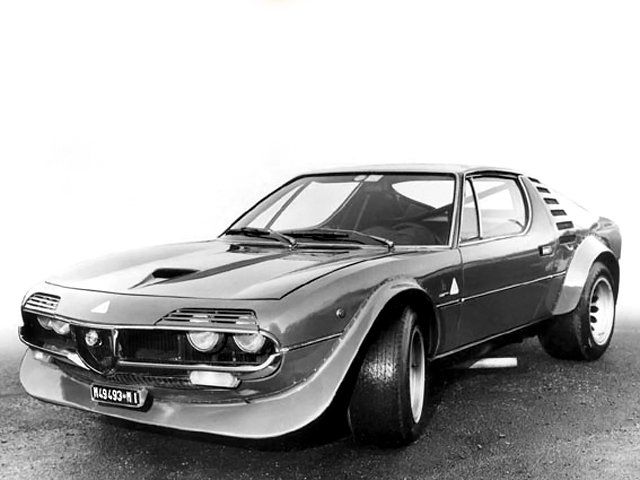
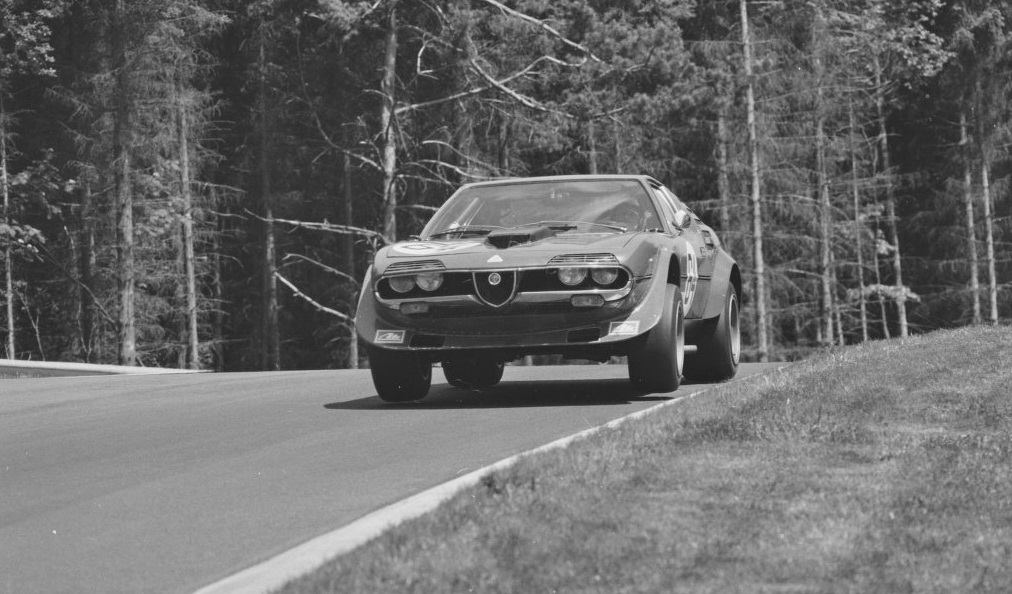
The car, of green colour, was greatly admired for its finish. It was equipped with a V8 engine taken out to 3 litres (2997 cc), supplying 370 HP at 9,000 rpm. The bodywork was given very large flares to accommodate large dimensions tyres (the same as the racing 33). The front flares were integrated with a large spoiler, extending for all the width of the car. In the interior the only novelties were the anatomical seats, the steering wheel, of smaller diameter and covered in leather, the instrumentation and roll bar.
The mechanical components were subjected to special tuning. We begin with the engine: higher compression ratio, lightened pistons, modified camshafts, balanced crankshaft,
special connecting rods, lightened flywheel, twin-plate clutch, more resonant unsilenced exhaust pipes with side outlets (one per side below the doors). Other mechanical interventions: front disks with aluminium callipers, modified hub carriers, rear axle with a different system by moving block, derived from the Giulia GTA, more rigid suspension and shock absorbers. Moreover, the front and rear roll centre was lowered to reduce the roll of the car in curves.
Nevertheless the Montreal as homologated, without the possibility of adopting a preparation for lightening the bodywork, was penalised by excessive weight.
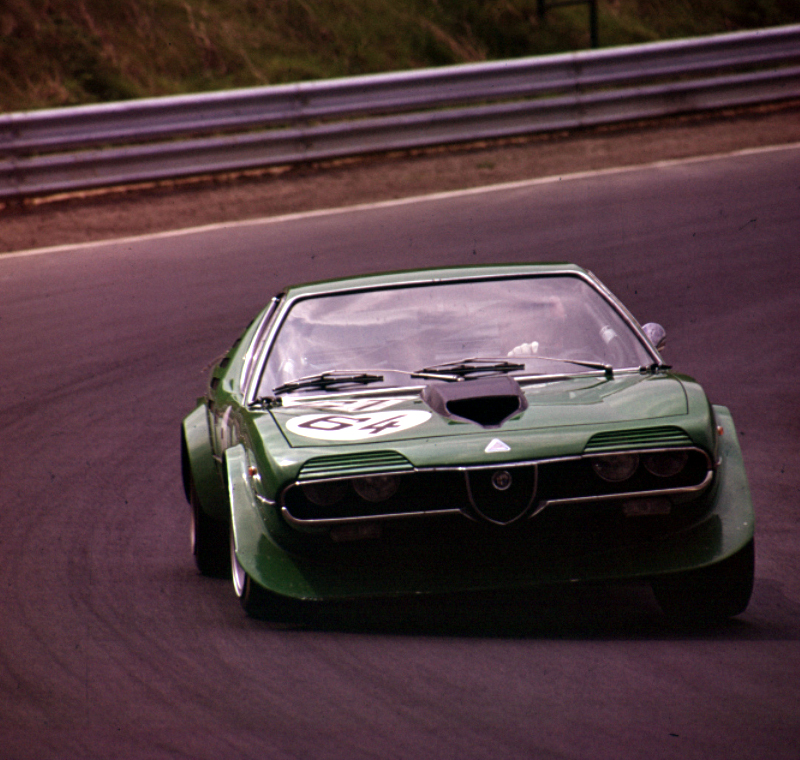
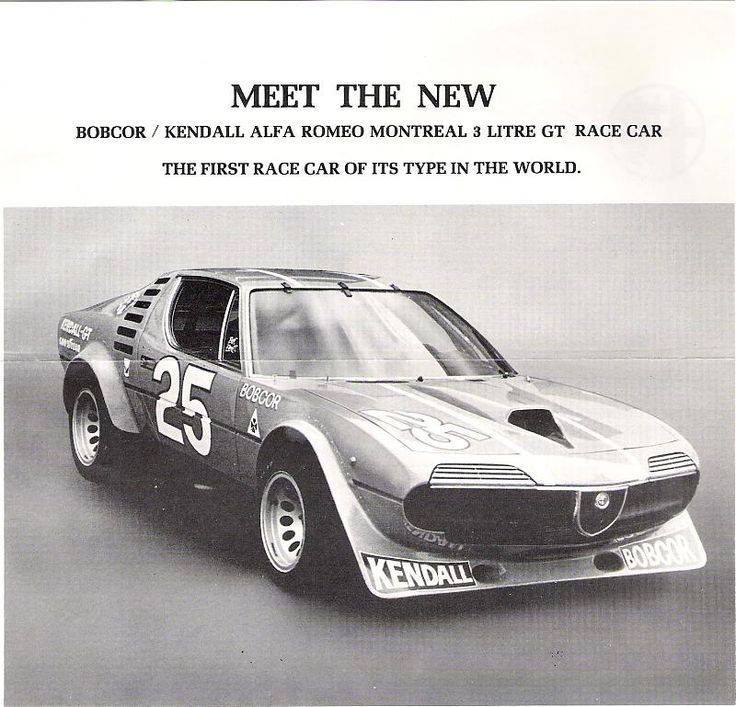
The car presented at London was utilised by Autodelta to gain experience in Group 4, then acquired by the German branch of Alfa Romeo. It participated in the 1000 kilometres of the Nurburgring on 27th May 1973, a round of the World brands championship, with the Gleich-Weizinger team.
The car appeared with a (now real) enlarged NACA air intake and cage roll-bar. It qualified in the final part of the grid, composed of very fast sports cars. Unfortunately, the high weight and accentuated roll rendered the car uncompetitive; its power was modest although, nevertheless, sufficient to qualify.
Another two Montreal were prepared for an American driver. In one of these the Autodelta driver and tester, Teodoro Zeccoli, participated in the 6 hours of Watkins Glen on 21st July, 1973, another round of the World Championship of Makes. In the race, Zeccoli broke the gearbox and was forced to retire while taking part in a lively and courageous race.
“The car, equipped with a 3 liters engine”, remembers Zeccoli (who had conducted the tests at Balocco track), “was certainly not suitable for competition. To render it really competitive, it would have been necessary to alter it totally. In races it repeated the characteristics of behaviour of the production car, even with the thoroughly modified suspension and anti-roll bars; considerable pitching and rolling and insufficient brakes. Other problems came also in the Spica injection pump. In races it demonstrated even more speed in acceleration than the Ferrari Daytona, demonstrating the considerable engine power. The advantage accumulated was cancelled out, however, at the first taking of a bend!”.
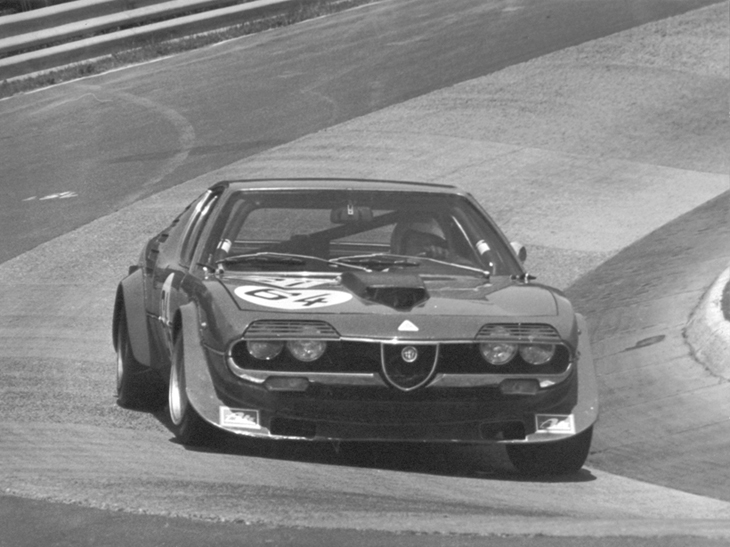

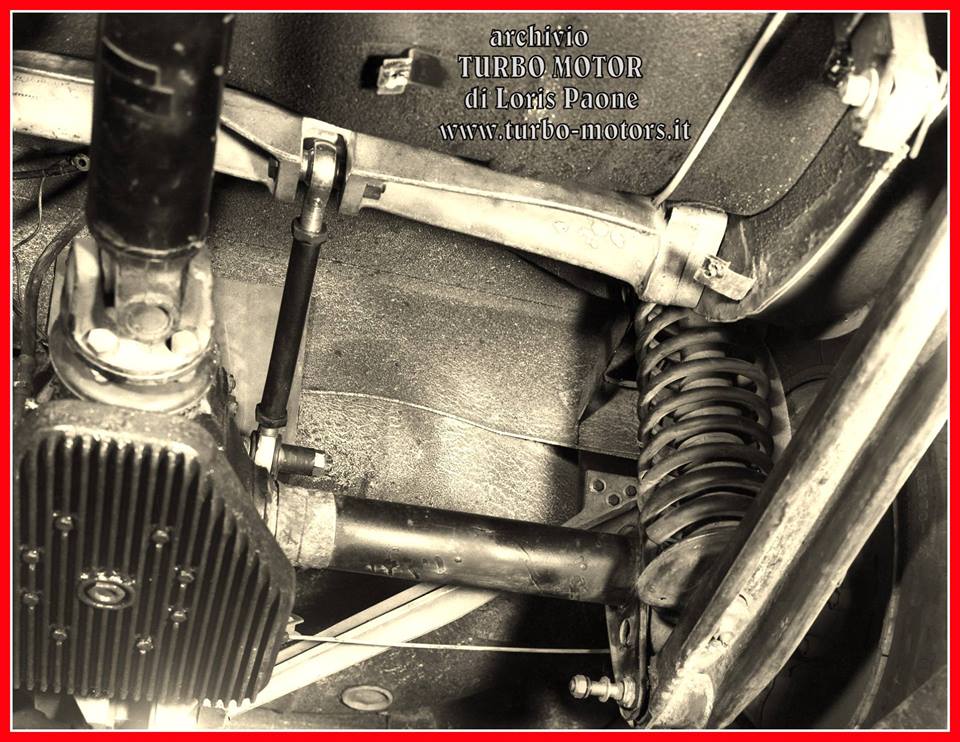
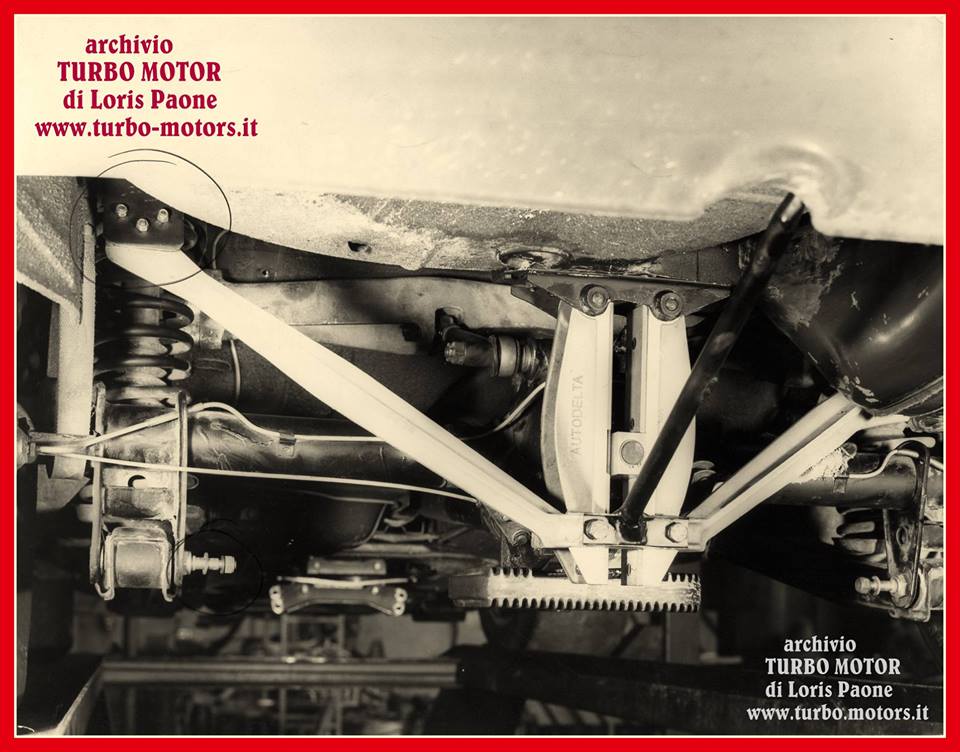
Images:
Centro Documentazione Museo Storico Alfa Romeo
Archivio Turbo Motor di Loris Paone.
Copyright Luigi Giuliani for Scuderia del Portello Alfa Romeo and Portello Factory
